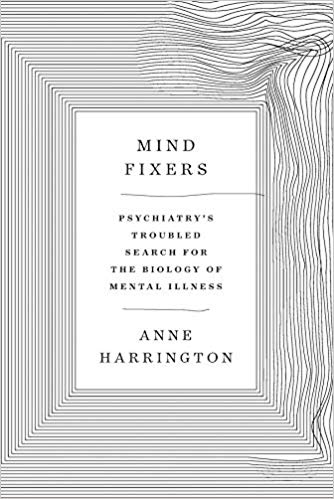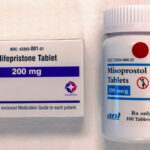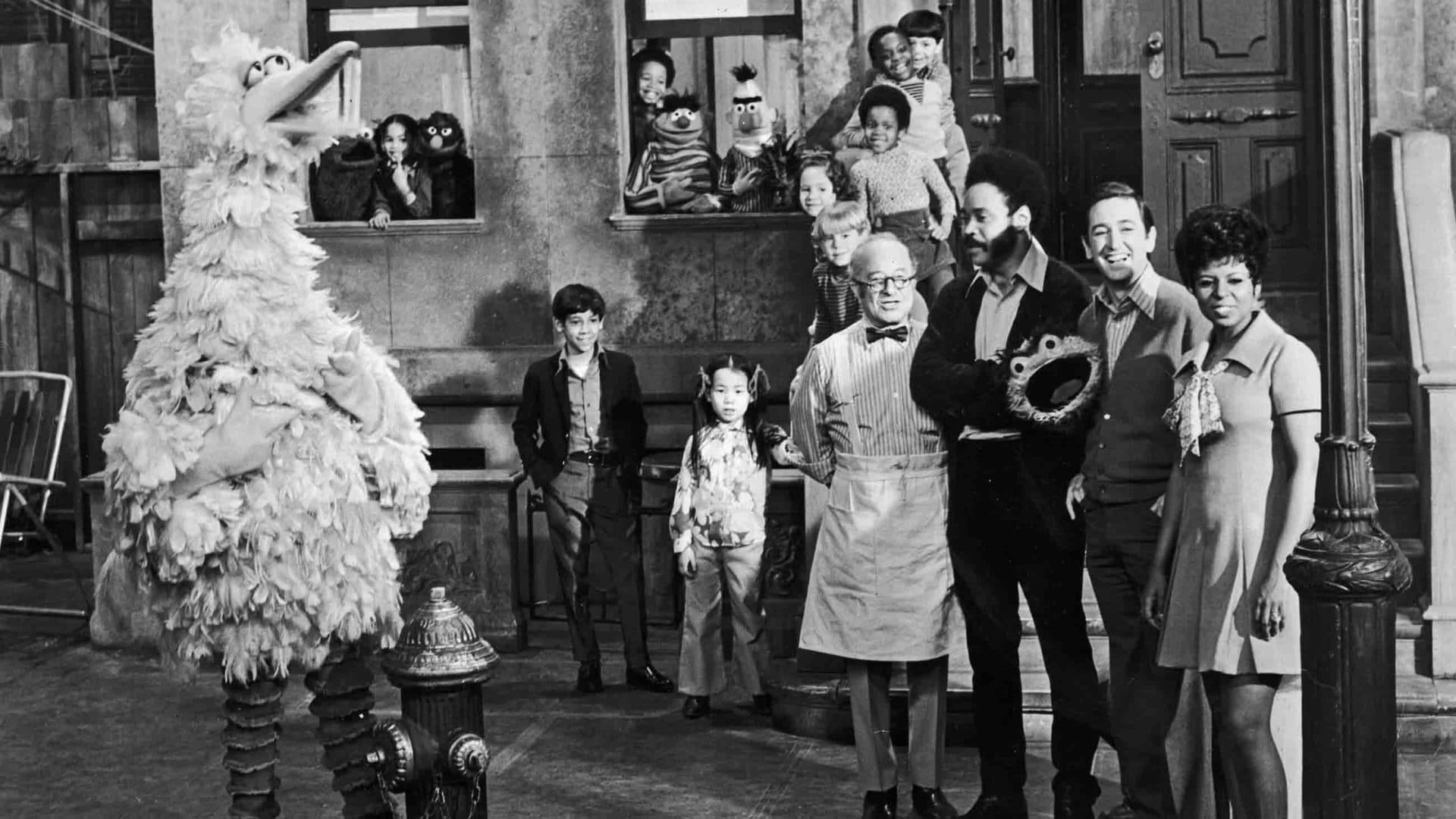In the wake of the assassination of Martin Luther King Jr. on April 4, 1968, a newly formed group called the Black Psychiatrists of America began to challenge their white colleagues to think about racism in a new way. Its members had been discussing for some time the possibility of creating an organization that would address their lack of representation within the key bodies of American psychiatry. But now, as one of these men, Dr. Chester Pierce, later put it ”we anguished in our grief for a great moderate leader,” and it seemed that the time for moderation on their side was also over. In Pierce’s words: “As we listened to radio reports and called to various sections of the country for the on-the spot reports in inner cities, our moderation weakened and our alarm hardened.”

WHAT I LEFT OUT is a recurring feature in which book authors are invited to share anecdotes and narratives that, for whatever reason, did not make it into their final manuscripts. In this installment, Anne Harrington shares a story that didn’t make it into her latest book “Mind Fixers: Psychiatry’s Troubled Search for the Biology of Mental Illness,” (W. W. Norton & Company).
Racism had led directly to King’s assassination, and not only had white psychiatry consistently failed to take racism seriously; it had, in ways both subtle and overt, enabled it.
The decision was thus made to organize black psychiatrists into an independent body that would use tactics of the civil rights movement to force American psychiatry to acknowledge both its own racism and its professional responsibility to address the scourge of racism in the country.
On May 8, 1969, representatives from the Black Psychiatrists of America interrupted the trustees of the American Psychiatric Association while they were eating breakfast, and presented them with a list of demands. These included a significant increase in African-American representation on APA committees, task forces, and other positions of leadership; a call for the APA to commit itself to desegregating mental health facilities; and a demand that any individual member of the society who was found to be guilty of racial discrimination be barred from practicing psychiatry.
The most fundamental demand made that morning, however, was that the profession begin to think about racism differently than it had in the past. Racism did not just happen because some bad people had hateful beliefs. Unlike many of their liberal white colleagues, who were fascinated by the potential mental pathologies of individual racists, the Black Psychiatrists of America (drawing on new sociological work) insisted that racism was built into the systems and structures of American life, including psychiatry itself. For this reason, as some of them put it in 1973, “institutional change (as opposed to personality change) are needed to root out and eliminate racism.”
Chester Pierce — the founding president of the Black Psychiatrists of America — was most concerned about the pernicious influence of one institution in particular: television. By 1969, virtually every American family home had at least one set. As one commentator at the time observed: “American homes have more television sets than bathtubs, refrigerators or telephones; 95 percent of American homes have television sets.”
Small children of all ethnicities were growing up glued to TV screens. This worried Pierce, because he was not just a psychiatrist but also a professor of early childhood education. And from a public health standpoint, he believed, television was a prime “carrier” of demeaning messages that undermined the mental health of vulnerable young black children in particular. In fact, it was Pierce who first coined the now widely used term microaggression, in the course of a study in the 1970s that exposed the persistent presence of stigmatizing representations of black people in television commercials.
It seemed to Pierce, though, that the same technology that risked creating another generation of psychically damaged black children could also be used as a radical therapeutic intervention. As he told his colleagues within the Black Psychiatrists of America in 1970: “Many of you know that for years I have been convinced that our ultimate enemies and deliverers are the education system and the mass media.” “We must,” he continued, “without theoretical squeamishness over correctness of our expertise, offer what fractions of truth we can to make education and mass media serve rather than to oppress the black people of this country.”
Knowing how Pierce saw the matter explains why, shortly after the founding of the Black Psychiatrists of America, he became personally involved in helping to design a new kind of television show targeted at preschool children.
The show had had originally been conceived as a novel way of bringing remedial education into the homes of disadvantaged children, especially children of color. Pierce, though, saw a different kind of potential for a show like this: one that could directly counter and counteract the racist messages prevalent in the media of his time. The issues for him were even more personal than they might otherwise have been: at the time, he had a 3-year-old daughter of his own. He thus agreed to serve as a senior advisor on the show, working especially closely with the public television producer Joan Ganz Cooney, one of its two creators (the other was the psychologist Lloyd Morrisett).
In 1969, the show aired on public television stations across the country for the first time. It was called “Sesame Street.”
It was not only the most imaginative educational show for preschoolers ever designed: it was also, quite deliberately, populated with the most racially diverse cast that public television had ever seen. All the multi-ethnic characters— adults, children and puppets — lived, worked, and played together on a street in an inner-city neighborhood, similar (if in an idealized way) to the streets in which many minority children were growing up.
Each show opened with scenes of children of different races playing together. Episodes featured a strong black male role model (Gordon, a school teacher), his supportive wife, Susan (who later is offered the opportunity to develop a profession of her own), a good- hearted white storekeeper (Mr. Hooper) and more.
Within a few years, Hispanic characters moved into the neighborhood as well. As Loretta Moore Long (who played Susan) later reflected: ‘“Sesame Street’ has incorporated a hidden curriculum … that seeks to bolster the Black and minority child’s self-respect and to portray the multi-ethnic, multi-cultural world into which both majority and minority child are growing.”
The radical nature of this “hidden curriculum” did not go unnoticed. In May 1970, a state commission in Mississippi voted to not air the show on the state’s newly launched public TV network: the people of Mississippi, said some legislators, were not yet “ready” to see a show with such an interracial cast. The state commission reversed its decision after the originally secret vote made national news — though it took 22 days to decide to do so.
“Sesame Street” would go on to become the most successful children’s show of all time. Over time, though, the radical mental health agenda fueling its creation was largely forgotten. Later critics would instead increasingly suggest that the show, as a straightforward experiment in early education, benefited white middle-income children more than its primary target audience of disadvantaged minorities, and in that sense had arguably partly misfired.
Chester Pierce, however, never lost sight of the hidden curriculum that, for him, had always been at the heart of “Sesame Street.” “Early childhood specialists,” he reflected in 1972, “have a staggering responsibility … in producing planetary citizens whose geographic and intellectual provinces are as limitless as their all-embracing humanity.”
What mattered most about “Sesame Street” was not the alphabet songs, the counting games or the funny puppets. What mattered most was its vision of an integrated society where everyone was a friend and treated with respect.
The program had originally been a radical experiment in the use of mass media to give the youngest generation of Americans their first experience of what Martin Luther King Jr. had famously called the Beloved Community: one based on justice, equal opportunity and positive regard for one’s fellow human beings, regardless of race, color or creed.
Anne Harrington is the Franklin L. Ford Professor of the history of science and medicine at Harvard University, director of undergraduate studies in her department, and faculty dean of Pforzheimer House, a 400-strong undergraduate community on the Harvard campus. She is the author of four books and numerous articles.











Comments are automatically closed one year after article publication. Archived comments are below.
i remember much of this from when the show first came out….KQED in san francisco had programing discussing the genesis of the show…….i remember sitting down with my one year old eldest son to watch the very first episode….which i remember being shown on one of the big three network channels….he loved it….i loved it….both of us can still, after all this time, sing many of the songs (“the alphabet song”—-i can still pronounce it!….”i love trash” “c is for cookie” etc”).. and we incorporated many of the ‘punch lines into our conversations (“nice nice….pretty feathers”…..”one of these things is not like the others” etc)…..i strongly believe that the show had so many things to offer that children connected with the things that were echoed in their own lives…..the inclusive nature, the skills like counting and letters, social interactions….all presented so naturally and without preaching that they were very easily understood and absorbed….and i believe that the world is better for what that generation and the following ones learned and incorporated into their lives
Firstly, I didn’t know this, and it is wonderful that we are still sharing our thoughts since it’s right at Fifty years that this endeavor began, and it has been there for my kids. I have a friend Judy Freudberg who has passed away, she wrote for the show for many years, and I honor her memory by mentioning Elmo’s part in much of this, and the other people on the show, writers and puppeteers and actors both ongoing and guests. Mention of Mr. Hooper and his shop, he was also a minority, the Jewish shopkeeper. When he died it was an experience for all the kids who had grown to love him. They got to experience life and death together. (I am still learning about life, and my growth is enhanced with articles like these, thank you)
I watched, and loved, Sesame Street as a child in New Zealand. It’s amazing to know how it came about – I certainly didn’t pay any attention to the ethnic make-up of the show.
I was born in 1966. As a child, I watched Sesame street every day until I went to kindergarten. I may have seen even the first episode. I remember when they switched Gordons, only I thought he had just shaved his head (just read a few years ago that they replaced the original actor). My parents purchased the Fisher Price Sesame Street characters – they were wooden then, and one of my cats loved to play with Gordon. I grew up in a middle class white family, in an all white town, with portraits of Confederate officers on the living room wall. We didn’t really talk about race, but my parents would whisper “black people” in conversation. As an adult, I travelled solo throughout the Caribbean and Latin America. One day I met a large brown-skinned man with a shaved head who became my friend, and later, my husband and the father of my beautiful bi-racial daughter. She too was raised watching Sesame Street. I do not think it was a failed experiment.
I was lucky enough to be one year old when Sesame Street came on the air. I absolutely believe it made a positive difference in how I see the world.
The most obvious and most powerful teacher of children for equality and change in our society is not schools or churches or well meaning psychiatrists. It is the parents of the children. How do we address the parents and parents to be so they will understand the global improvement in our society if our children are taught to see others with respect and equality. Children will act based on observation of behavior not words and the behavior of their parents is most critical. Parents need to take responsibility for this and stop foisting how their children develop on other people or institutions
Pamela, while I understand that you are trying to sound well versed here in wanting to bring people together, by suggesting that we do so by the power of your God, you are leaving out a large population of peoples who do not follow Jesus Christ. Are you suggesting then that only Christians deserve to come together? Or that Muslims, Jews and all other denominations are wrong for how they pray and cannot come together with other religions to live happily together? I don’t see how that mentality helps anyone but the primarily white Christians.
Also it depends on which Testament God you are referring to. The one who condemns mankind for the slightest difference to his rules or the slightly more forgiving one who is now misunderstood and misinterpreted by his followers as one to leave out the poor, the different and those that do not adhere strictly?
Sesame Street brings together children and adults on all spectrums, be it mental, physical or gender identity and does so by explaining their power and their right to exist as they do without borders or forcing them into a perfect little box.
Sesame Street came out after my preschool years, but it was just in time for my younger sister. I watched so many episodes. It was an engaging and entertaining show for younger children. What I gained most from this show is that it normalized different people living among and interacting with each other in positive ways. As a white, working-class child growing up in a white working-class neighborhood this was important. Media is a powerful thing. Until recently most television shows have either left out Black and Brown people entirely or cast them in non-supporting sidekick roles. That brainwashes white children too. Sesame was a powerful influence in my life. I liked Oscar and Cookie Monster. Big Bird got on my nerves though.
Our society is so in trenches with racism. The longer we continue to focus on our differences vs our commonalities, change will stagnate. I believe that one means of breaking this evil is through the the Christian Churches. Since racism is inherently evil why not seek the most Powerful God, Jesus Christ, the Word of God and the only sourse of pure love to exist to begin bring humanity together. Maybe by Church’s of color coming together to help an area that is impoverished. When I say, ” people of color” I’m including all shade of mankind. I saw a show that made a point that would be good for all people to learn. There is no black, white, brown, yellow, or any combinations of color. We are all one color !!! God created us as one group of people, His People. If Church’s could unit for a common cause, learning that we all are one group, learn to love each other as God wants, then hopefully change can begin. I’m Dyslexic and have a hard time expressing myself in print. Hopefully you can seek my message and not critic my way of writing. All I can say is my heart breaks when I see children being judged, deprived and condemned because of their color, where they live, how much or how little they have and so forth. Evil is at the core. Evil wants to kill, destroy and maim. Just contiueing to forge ahead with fresh ideas can only bring healing, understanding and unity. May God bless all who read this. May all who truely want change consider The Power of Jesus Christ who has concurred evil.
I agree with you that our society is saturated in racism. Unfortunately, your comment shows that you may not be aware of the history of oppression by Christian churches in this country, and how those small & large actions not only contributed to racism in our nation’s early days, but continues to support it today.
I feel that your comment is coming from a place of wanting things to improve, and in that same vein, I encourage you to really read and understand how pervasive racism and its disdain for difference (which, in actuality, is nothing to be afraid of) is. Once folks understand how deep and wide this runs, we can start changing beliefs, behaviors, and systems that have perpetuated racism, historically and currently. In regards to Christianity, this article, and the book it refers to, is a good place to start. https://www.christianitytoday.com/ct/2019/january-web-only/jemar-tisby-color-of-compromise-church-racism.html
It has been my experience that MOST Christian churches promote racism under cover of self-righteousness.robin
Amen to that Robin! This recovering Catholic agrees!